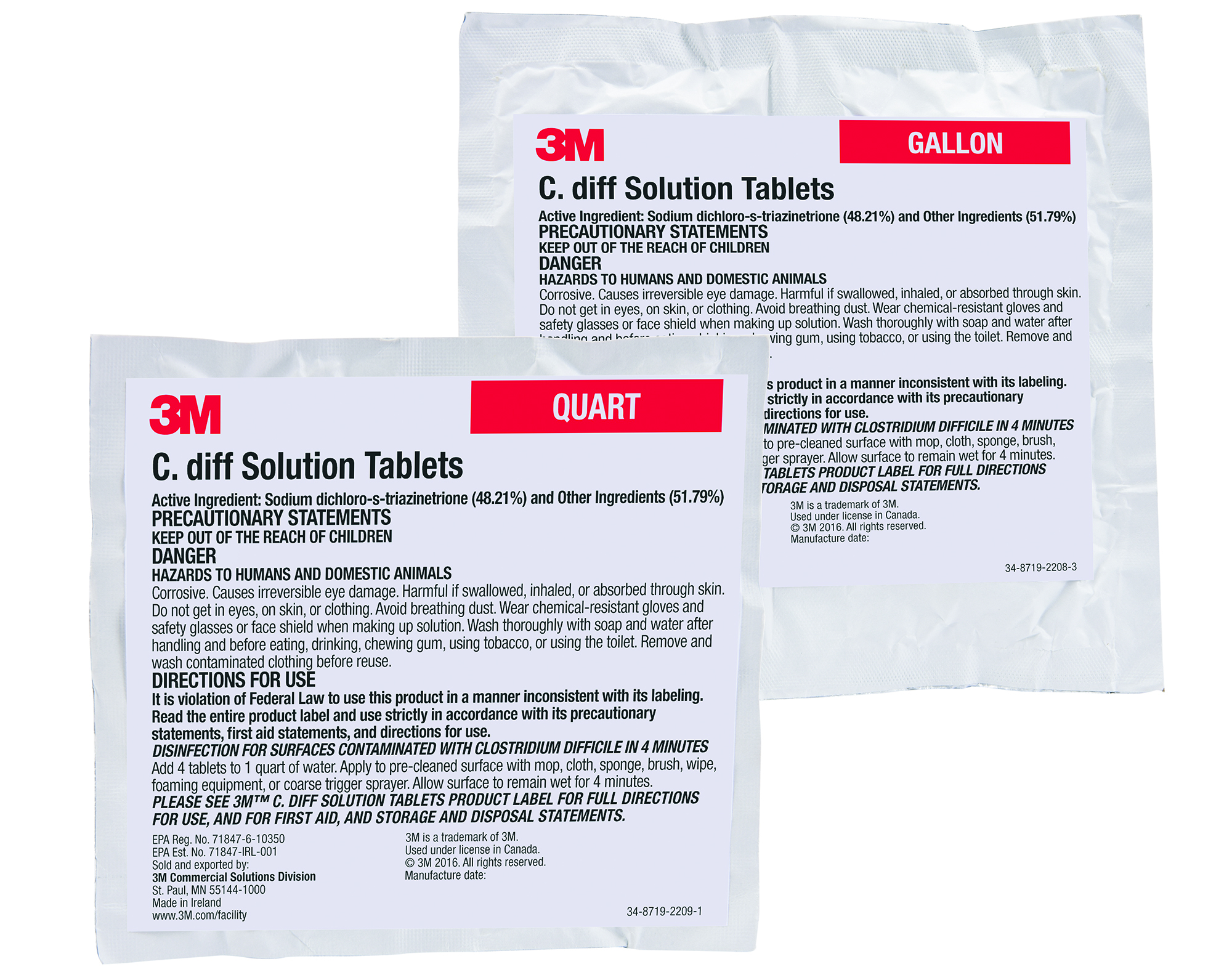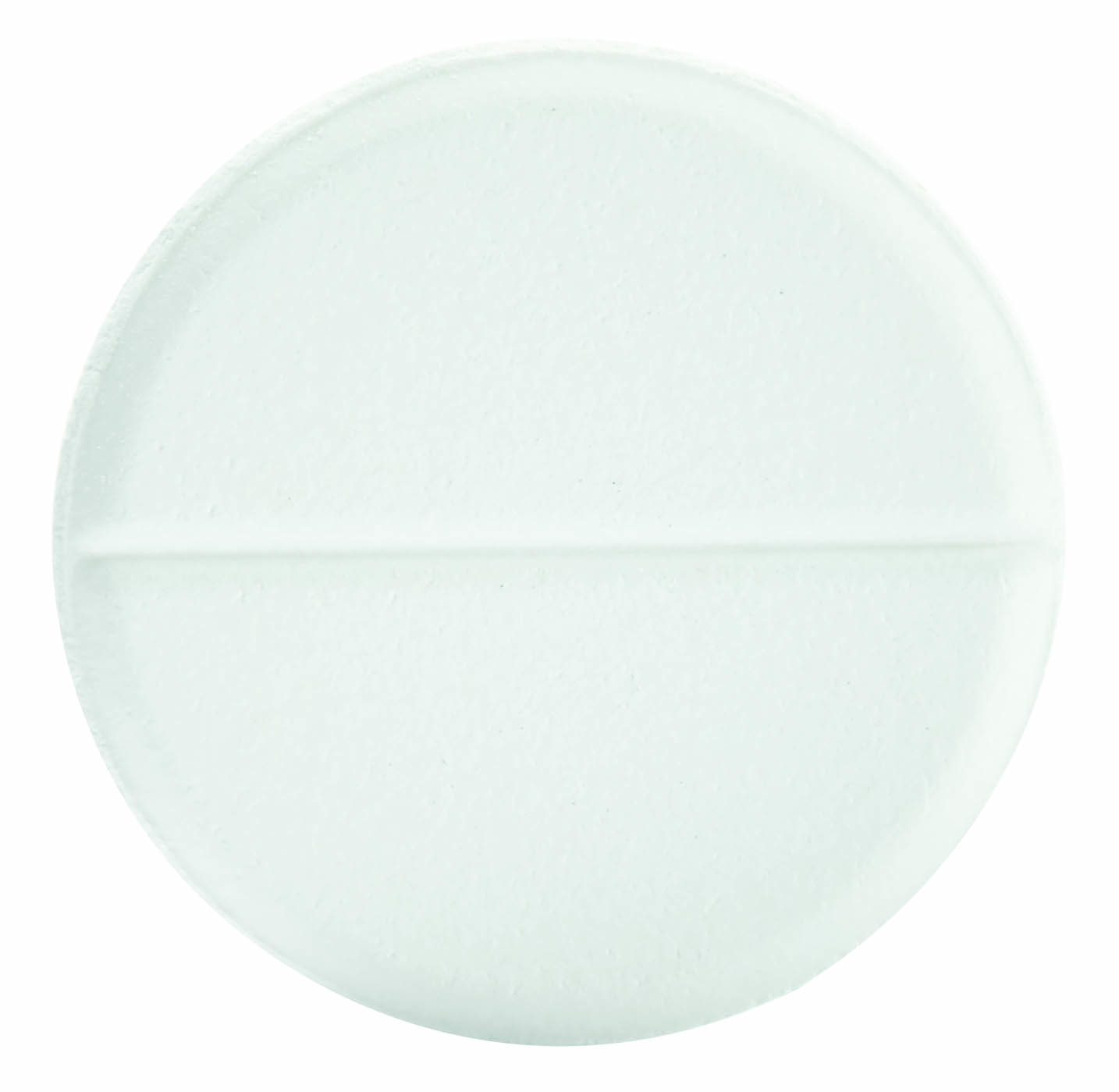When most people think of hospitals, they imagine a safe, clean environment where patients can comfortably receive treatments in an effort to become healthy.
In reality, hospitals can pose potential risks to both patients and staff, through the threat of infections caused by pathogens such as MRSA, E. coli, and Clostridium difficile (C. diff). In fact, C. diff is the most common microbial cause of health care-associated infections in U.S. hospitals and costs up to $4.8 billion each year in excess health care costs.
Despite a universal commitment to addressing C. diff infections within health facilities, prevention and containment pose numerous challenges as the spores can survive for months on a large variety of surfaces. Fortunately, proactive measures — including the use of surface disinfectants — can be taken by health care facility managers to mitigate the risk and promote the well-being of both patients and staff.

3M C. diff solution tablets are EPA-registered to kill C. diff spore in four minutes. (Image credit: 3M)
Product Considerations For Surface Disinfectants
When choosing an effective disinfectant to use, it’s important that healthcare facilities and hospitals consider the following factors:
- Determine whether the product effectively addresses the facility’s organism(s) of concern. For example, to mitigate C. diff spores, facilities should use an EPA-registered antimicrobial product effective against C. diff spores, as opposed to a general-purpose disinfectant. Standard EPA-registered hospital disinfectants are not effective against C. diff spores. The EPA maintains a listing of appropriate C. diff sporicidal products under “List K”.
- Consider the dwell time — the amount of time that a surface must remain wet to allow the chemical to be in contact with the organism in order to kill it — before choosing a product. It’s important to note that not allowing for the appropriate dwell time will decrease efficiency and reduce and or negate the efficacy claims as directed on each product label. To not use an EPA-registered disinfectant per its specific label directions is a violation of federal law. Ensure the disinfectant is used safely and correctly by individuals, and that it is applied onto and/or with the variety of surfaces and equipment for which the disinfectant has been approved.
- As cost is an important consideration when making purchase decisions across the entire healthcare industry, consider choosing a product that is highly versatile and provides an extended shelf life.
- Be cognizant of the disadvantages associated with using bleach or peracetic acid as a surface disinfectant. Bleach and peracetic acid in ready-to-use form can be expensive, and many people have aversions to the smell. Additionally, the products can damage surfaces and cause discoloration.

The tablet dissolves in approximately three minutes and can be applied with a cloth, wipe, mop, or coarse trigger spray. (Image credit: 3M)
Additional Considerations When Addressing Healthcare-Associated Infections
In an effort to mitigate health care-associated infections, it’s imperative that facility managers take a proactive approach to their cleaning routine to minimize risk, reduce hazardous exposure, and address potential issues. In addition to product choice, facility managers should consider several factors when designing a cleaning plan.
First, training environmental services staff is a key factor in preventing the spread of infection. A proper training program will allow facility managers to teach and train their staff the proper way to clean and remove the organisms, while keeping safety and efficiency paramount.
In addition to training, it’s beneficial to develop a solid partnership with the healthcare facilities’ infection control department. By working collaboratively with the hospital’s infection control staff, both parties can ensure they are effectively working to reduce infection rates without duplicating efforts.
Facility managers should also implement a comprehensive surveillance and reporting plan to measure surface cleanliness and identify where and when infections are occurring in a building. Developing and executing a strong infection control strategy will help promote and ensure the most effective disinfection practices across the facility.
Most importantly, an effective plan can help identify potential trends and threats before they happen, as well as providing confirmation that surfaces and rooms are being cleaned appropriately.
In recent years, C. diff prevention has become a nationwide priority with new national reduction targets scheduled for implementation by 2020, according to the National Action Plan to Prevent Health Care-Associated Infections: Road Map to Elimination. As a result, it is critical for health care facilities to have a thorough plan in place that addresses potential infections both in the short-term — through the use of an effective surface disinfectant — and in the future — through planning, surveillance and reporting.




